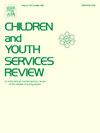中国青少年的身体虐待、不安全依恋和网络游戏障碍:单亲和非单亲家庭的多组分析
IF 1.7
2区 社会学
Q1 FAMILY STUDIES
引用次数: 0
摘要
本研究探讨了身体虐待对网络游戏障碍的影响,并研究了不安全依恋在上述关系中的中介作用。此外,研究还进行了多组分析,旨在探讨概念模型中的路径在单亲家庭和非单亲家庭青少年群体中是否存在显著差异。我们采用多阶段随机整群抽样的方法,从中国河北省共抽取了2001名12-18岁的青少年(男生占51.3%,女生占48.7%)。结果显示,身体虐待与网络游戏障碍直接相关(B=0.139, β = 0.107, p < 0.01, 95 % CI [0.063, 0.218])。只有焦虑依恋对身体虐待和网络游戏障碍之间的关系(B=0.069,β=0.053,p <0.001,95 % CI [0.045,0.098]),以及身体忽视和网络游戏障碍之间的关系(B=0.025,β=0.029,p <0.001,95 % CI [0.015,0.038])起到了中介作用。多组分析结果表明,两组之间的路径系数存在显著差异。在身体忽视与焦虑依恋之间的特定结构路径上观察到显著差异(CRD= - 2.851, p <0.05),单亲家庭的青少年受到的影响更大(B=0.248, β = 0.279, p < 0.001, 95 % CI [0.176, 0.392])相比,来自非独生子女家庭的青少年(B=0.115, β = 0.137, p < 0.001, 95 % CI [0.073, 0.199])受到的影响更大。研究结果表明,不安全依恋是身体虐待与网络游戏障碍之间关系的间接影响机制。多组分析的结果要求未来的从业人员在干预青少年网络游戏障碍时,对兄弟姐妹的家庭条件进行评估。本文章由计算机程序翻译,如有差异,请以英文原文为准。
Physical maltreatment, insecure attachment, and online gaming disorder among Chinese adolescents: A multi-group analysis of single and non-single child family
This study examined the effect of physical maltreatment on online gaming disorder and investigated the mediating role of insecure attachment in the aforementioned relationship. Further, multi-group analysis was conducted aiming to explore whether the pathways in the conceptual model were significantly different across the groups of adolescents from single and non-single child families. Based on a multi-stage random cluster sampling method, a total of 2001 adolescents aged 12–18 years (51.3 % boys and 48.7 % girls) was obtained from Hebei Province, China. We used Structural Equation Modeling (SEM) and multi-group analysis in SEM for data analyses.The results showed that physical abuse was directly associated with online gaming disorder (B=0.139, β = 0.107, p < 0.01, 95 % CI [0.063, 0.218]). Only anxious attachment mediated the relationship between physical abuse and online gaming disorder (B=0.069, β = 0.053, p < 0.001, 95 % CI [0.045, 0.098]), and between physical neglect and online gaming disorder (B=0.025, β = 0.029, p < 0.001, 95 % CI [0.015, 0.038]). The results of multi-group analysis suggested the significant difference in the pathway coefficients between the two groups. Significant difference was observed in the specific structural pathway between physical neglect and anxious attachment (CRD= − 2.851, p < 0.05), with the effect being stronger for adolescents from single child families (B=0.248, β = 0.279, p < 0.001, 95 % CI [0.176, 0.392]) compared with those from non-single child families (B=0.115, β = 0.137, p < 0.001, 95 % CI [0.073, 0.199]). The findings suggest the indirect influencing mechanism of insecure attachment in the relationship between physical maltreatment and online gaming disorder. The results of the multi-group analysis require future practitioners to evaluate the family conditions of siblings when intervening in online gaming disorder of adolescents.
求助全文
通过发布文献求助,成功后即可免费获取论文全文。
去求助
来源期刊

Children and Youth Services Review
Multiple-
CiteScore
6.30
自引率
6.10%
发文量
303
期刊介绍:
Children and Youth Services Review is an interdisciplinary forum for critical scholarship regarding service programs for children and youth. The journal will publish full-length articles, current research and policy notes, and book reviews.
 求助内容:
求助内容: 应助结果提醒方式:
应助结果提醒方式:


